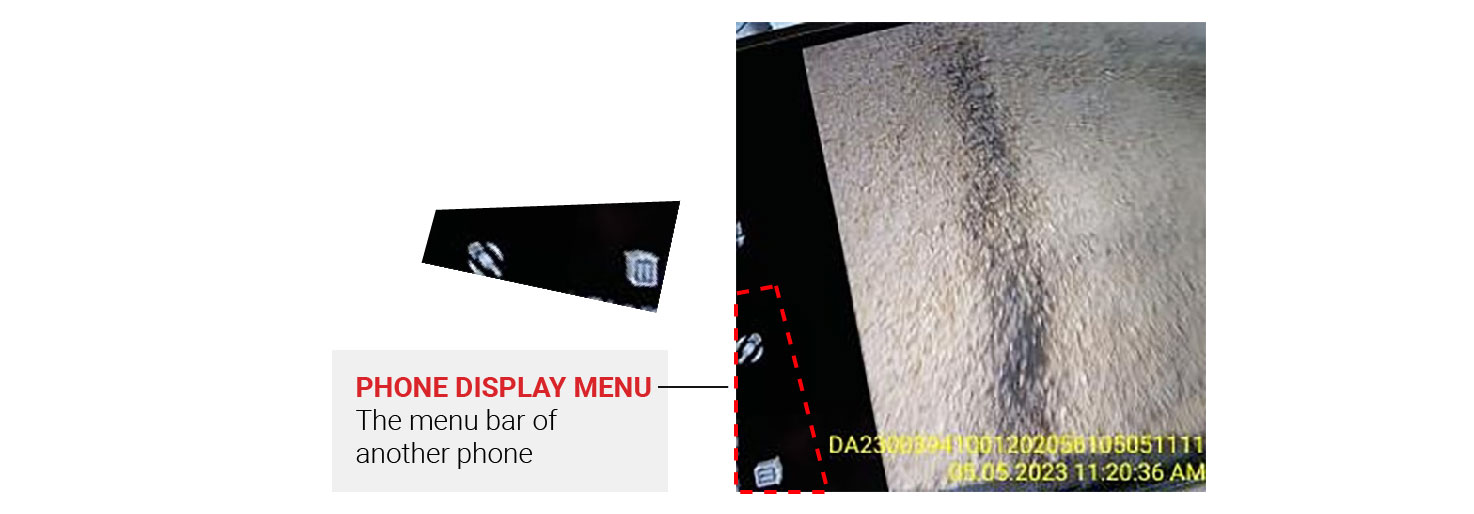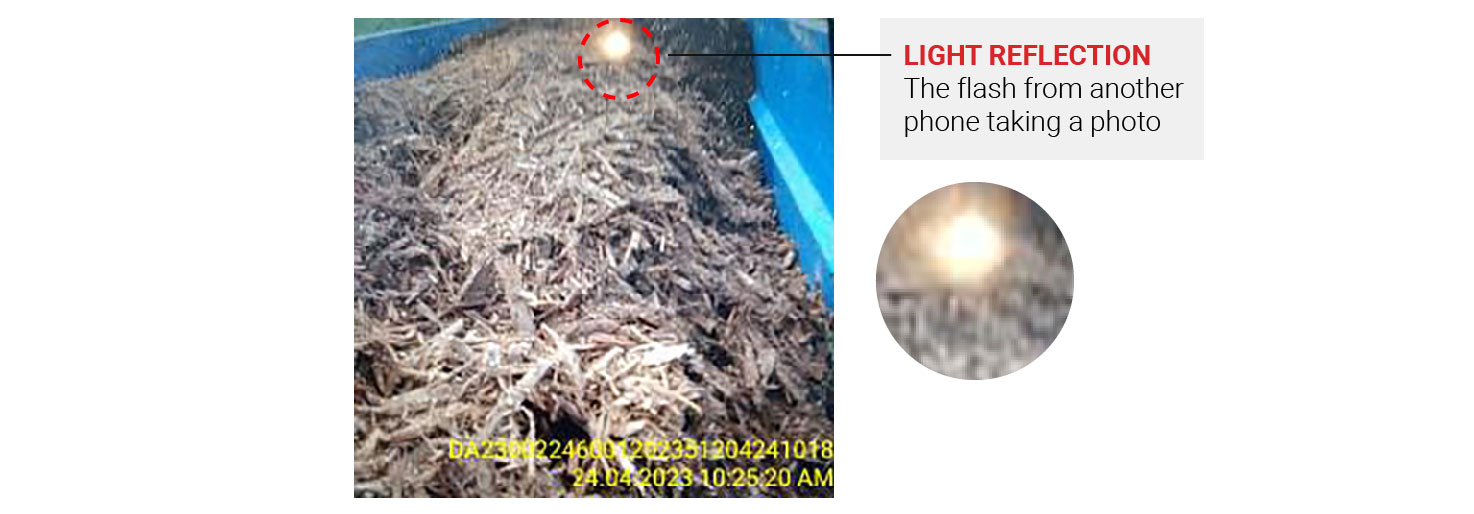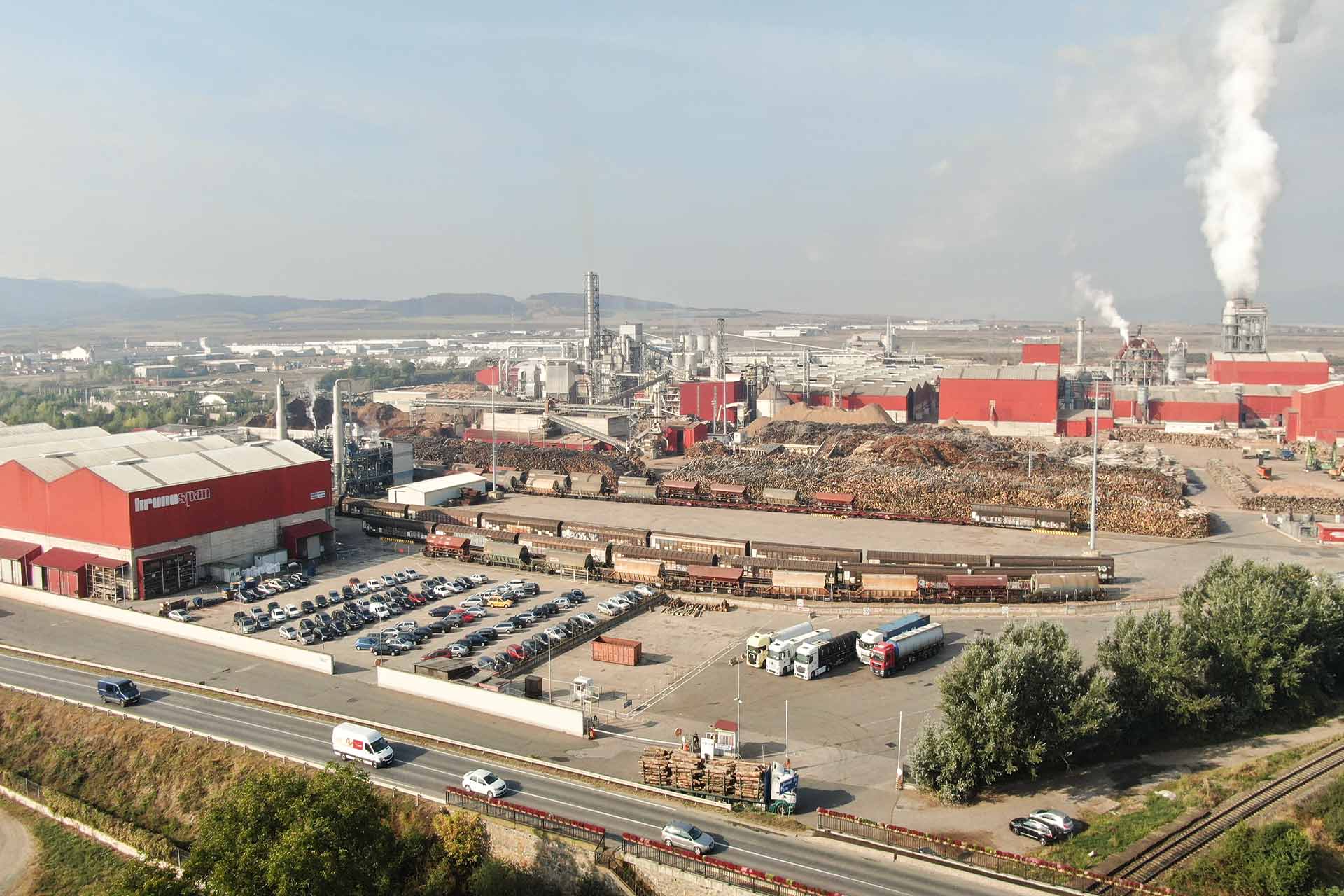Reporters requested data on the scope of the fake image problem after learning of it from a source.
The police and the Forest Guard told OCCRP that between April 2022 and December 2023, authorities had uncovered 2,400 cases of fake or copied images submitted to SUMAL, leading them to confiscate around $1.6 million worth of wood, and issue around $2 million in fines.
This “illegal method is frequently used by professional financial operators to ship and transport wooden materials of illegal origin,” said the police statement provided to reporters, adding that cases had been “identified in most of the country’s counties.”
Police refused to provide information on how many times Silva Logistic had been cited for uploading falsified photos, citing data privacy laws in the EU, but a police source told OCCRP that Silva had been cited 49 times, leading to fines worth a total of 1,200 euros (around $1,300) — or an average of just 24 euros per infraction.
Reporters found at least 440 examples of problematic or missing photos from Silva in a comparable time period, suggesting that police are not detecting the phenomenon nearly as often as it occurs.

Credit: Andrei Ciurcanu/OCCRP
Wood stored outside Kronospan’s factory in Sebeș, central Romania.
‘An Evident Risk’ of Illegally Logged Wood
Kronospan is one of the world’s largest producers of wood-based panels, which are sold by DIY chains and furniture companies across the world, including global giant IKEA. Builders also use them in everything from parquet flooring to timber-framed houses and facades.
In Romania, Kronospan operates two processing plants that export wooden panels across the E.U., including to Italy, Spain, Belgium, the Czech Republic, and France. It also owns Silva Logistic, which carries loads of wood and sawdust from forests, depots, and processors across Romania to Kronospan’s main mill in Sebeș, in central Romania.
Reporters spent months examining more than 20,000 images that Silva Logistic truckers submitted to SUMAL between April 2022 and November 2023. In total, the data covered more than 7,000 trips, originating from sites all over Romania. According to the data, at least half the wood carried by these trucks ended up at the Sebeș mill.
OCCRP used the same techniques as experts from Romania’s National Forest Guard to identify copied or falsified images, including looking for blue-violet discoloration or wavy lines that indicate the pixelation of another phone’s screen in the image.
In many cases, the clues were even more obvious.
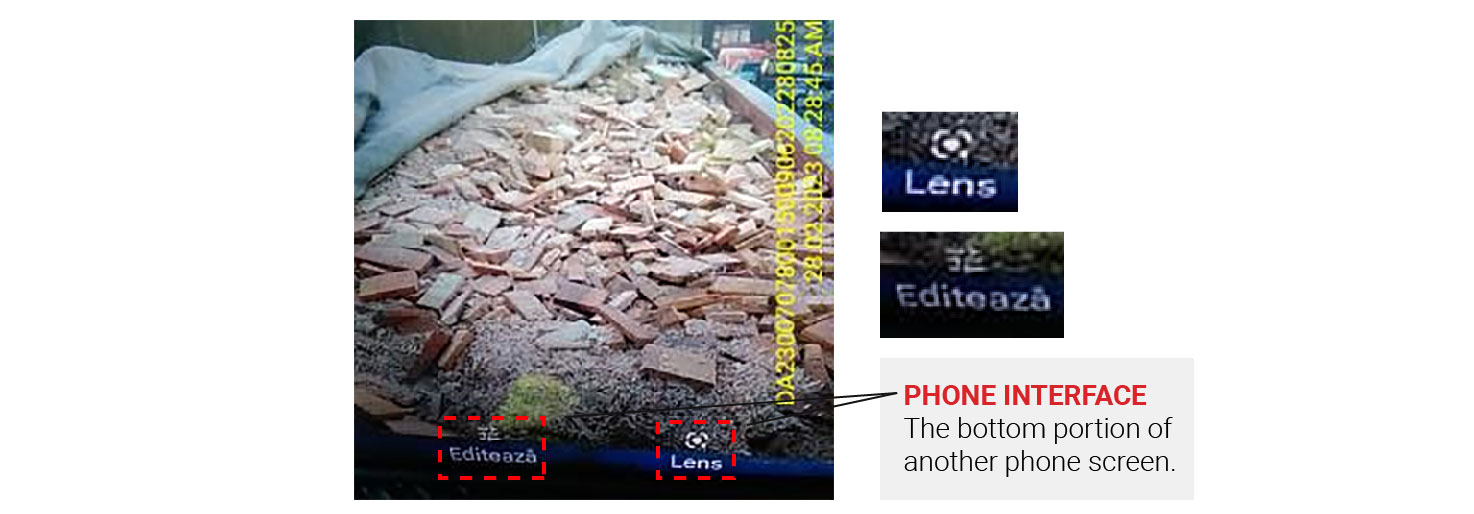
In this image submitted on April 11, 2023, the fingers of a person holding up another phone with a picture of wood offcuts can be seen. So can the reflection of the person taking the photo.
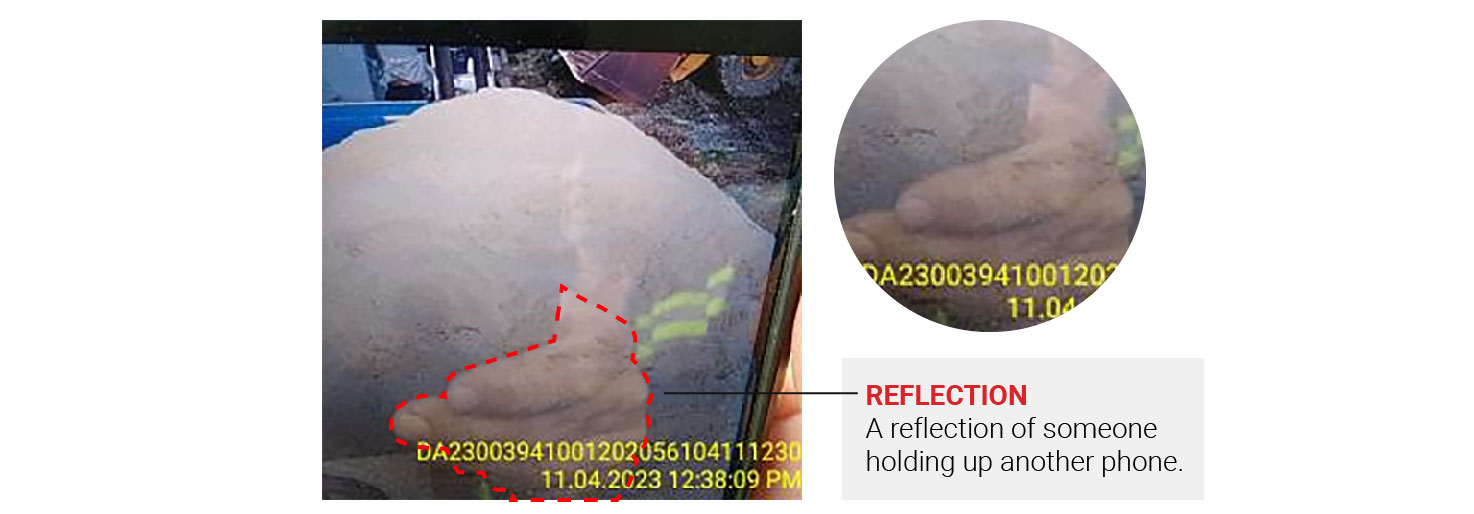
Credit: Edin Pašović/OCCRP
In other photos, like this one, the text menu of the phone with the original photo was clearly visible.
Altogether, OCCRP counted 244 Silva Logistic trips that were logged in SUMAL with what appeared to be copied images between April 2022 and November 2023, carrying a total of around 3,000 cubic meters of wood. In some cases, Silva Logistic trucks submitted the same copied images for multiple trips.
Catalin Grigoraș, the director of the University of Colorado’s National Center for Media Forensics, agreed with OCCRP’s analysis of most of the images, pointing to the same issues that reporters had identified.
For 60 of the transports, he said the details weren’t clear enough to give a definite conclusion. A source in Romania’s Forest Guard who reviewed a sample of those images said they showed signs of being copies, such as the visible margins of the phone with the original photo, or a crack in that device’s screen.
Kronospan’s general manager in Romania, Oana Bodea, said the company took pains to ensure that all the wood it received was legally cut, including checking the details uploaded to SUMAL and rejecting some of the transports. Still, she acknowledged “shortcomings” in the conduct of individual drivers.
“While we agree that there are shortcomings in the manner in which transport drivers are taking photos — out of carelessness or ignorance — we also uphold that the wood we acquire is thoroughly checked for provenance,” she said, adding that just because the photos were problematic did not mean that the wood had been illegally logged.
“As you will undoubtedly see, it is clear that the wood material in question is not of illegal provenance — all documents are in order and the wood material received is conforming with the presented documents,” Bodea said.
“Our most important goal in Silva and in Kronospan is to totally abide by the legislation in force and to make as many checks as possible so as to ensure that the timber we buy is with legal provenance.”
This is particularly important because under new rules adopted by the EU in 2023, companies that sell wood products in the bloc must be able to show their products don’t drive deforestation. Thomas Waitz, a member of the European Parliament from Austria, said OCCRP’s findings showed that companies that buy from Kronospan could risk purchasing illegally sourced wood.
“Any furniture-producing company that buys Kronospan products cannot [rule out having] at least partly illegally logged or falsely declared wood in their value chain. There is a big risk. There is an evident risk,” he said.
IKEA did not comment directly on OCCRP’s findings, but said it takes the monitoring of its supply chains “very seriously” and that “improving the traceability of wood supply chains and contributing to making responsible forest management the global standard are top priorities.”
“Major” Legal Inconsistencies Create Confusion on Penalties
Determining who bears the responsibility for falsified photographs is also difficult because of an inconsistency in Romania’s forestry law: While it is the transport company that takes the photographs of the wood and uploads them to SUMAL, criminal liability lies with the company that provided the wood being transported.
In a letter obtained by reporters, regional Forest Guard inspectors warned the environment ministry in February 2022 that this discrepancy could create difficulties in enforcing the law.
“There is controversy in the text of the law that penalizes the issuer of the transport permit for a contravention that is the exclusive responsibility of the transporter,” said the letter, which also pointed to “major inconsistencies between legal norms, SUMAL and the law that sanctions forestry offenses.”
Asked for comment, the National Forest Guard said these discrepancies would be addressed in the new forestry law being debated before Romania’s parliament.
According to OCCRP’s analysis of the SUMAL data, Silva Logistic submitted copied images for transports of wood coming from 66 different timber companies from all over Romania — including some of the biggest suppliers in the country.
Kronospan’s Suppliers
OCCRP’s analysis found 66 companies supplied wood that was transported by Silva International trucks which submitted what appear to be copied photographs to SUMAL. Hover over each dot to see a selection of these images. Zoom in to find more companies.
The Silva Logistic truck that police stopped in May last year — the case that first tipped off reporters about the use of copied images — was carrying wood from Silvania International, one of the largest wood companies in Romania, towards Kronospan’s factory in Sebeș.
After police discovered the deception, Silvania International was fined the equivalent of around $650 and the contents of the truck were confiscated. But the transport company responsible for submitting the photos, Silva Logistic, faced no penalty at all.
Emil Iugan, the owner of Silvania International, told OCCRP the driver of that truck had submitted a copied image because he was in a rush.
“The driver was in a hurry, because he loaded the wood from two different locations and he photographed another photo and uploaded it to SUMAL,” he said.
He insisted that all his company’s other transports had been by the book, and that he had taken “measures” to ensure that future transports would be accurately documented.
But this was not the only case where those transporting wood from one of Iugan’s companies filed cloned images. Reporters identified 29 more potentially falsified images in the SUMAL data from trucks carrying wood that originated either from Silvania International or another of Iugan’s logging companies.
When reached for comment about those additional cases, Iugan emphasized that it was not the supplier’s obligation to take the photos.
“The law does not require me to do that. I loaded the container and they took it,” he told OCCRP.
Silva Logistic drivers also submitted copied images for wood originating with HS Timber Production, another major Austrian timber processing company with a significant presence in Romania.
Formerly known as Holzindustrie Schweighofer, HS Timber has faced multiple probes in Romania for allegedly dealing in problematic wood over the years.
The SUMAL data shows HS Timber supplied wood for five separate journeys made by Silva Logistic that submitted the same cloned image. Four took place on a single day, February 13, 2023, as a truck made multiple deliveries of wood from HS Timber’s former depot in Sebeș to Kronospan’s nearby factory. Two weeks later, the driver of the same truck submitted the same picture for a separate delivery of wood from a Kronospan-owned depot, located 380 kilometers away from the Sebeș mill.
Five Transports, One Photo
OCCRP’s analysis found one Silva Logistics truck submitted the same image five times, on two different days, for transports of wood that took place hundreds of kilometers apart.
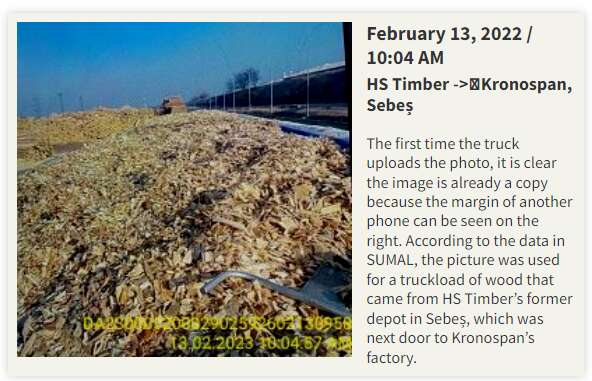

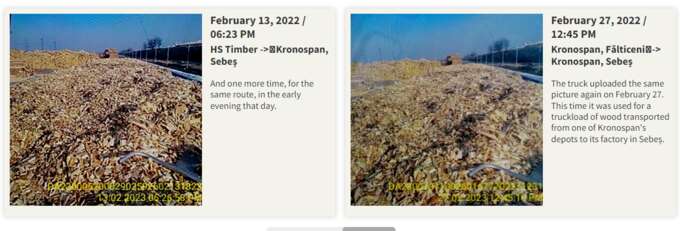
Asked for comment, Michael Proschek-Hauptmann, HS Timber’s chief compliance and sustainability officer, replied that the company had investigated the case internally and was not able to “substantiate your concerns in our direction.”
OCCRP reporters contacted the other companies that provided the wood transported by Silva Logistic trucks in cases where fake photos were used. Ten replied, all noting that it was not their responsibility under Romanian law to take and upload the photos of the wood.
“We Need More People”
Romanian authorities are also looking for a technological solution to the problem of fake photographs, and are exploring the possibility of using artificial intelligence to analyze the images.
In November 2023, the environment ministry announced it had launched an 8.9-million-euro ($9.6 million) tender to develop a video system that would use license plate recognition technology and advanced cameras to capture information on every truck. The data would then be compared to the records in SUMAL. According to the press release, this would be supported by 11 control rooms, most of them in Forest Guard offices.
However, a pilot test found that although AI technology could detect blatantly incorrect images submitted to the system, like photographs of chairs or faces, it wasn’t sophisticated enough to detect more subtle frauds, like images of real wood.
That means that Romania is still relying on spot checks from the National Forest Guard to deal with the problem, alongside a small team from SUMAL itself.
It’s still “not enough,” said the Romanian National Forest Guard inspector interviewed by reporters. “We need more people.”
Making their task even more challenging, truck drivers are developing new techniques to make fake images harder to detect. To avoid creating the reflection of a flash, which can be easily spotted by inspectors, they are now taking pictures of printed photos and using camera filters to make the images look genuine.
In a recent example identified by OCCRP — which the Forest Guard inspector said was similar to cases he has begun to encounter — one image submitted by a Silva Logistic transport appeared to be a photograph of a printout.
Two of the three pictures of the truck, which traveled to Kronospan’s factory in Sebeș on June 15, 2023, look normal.
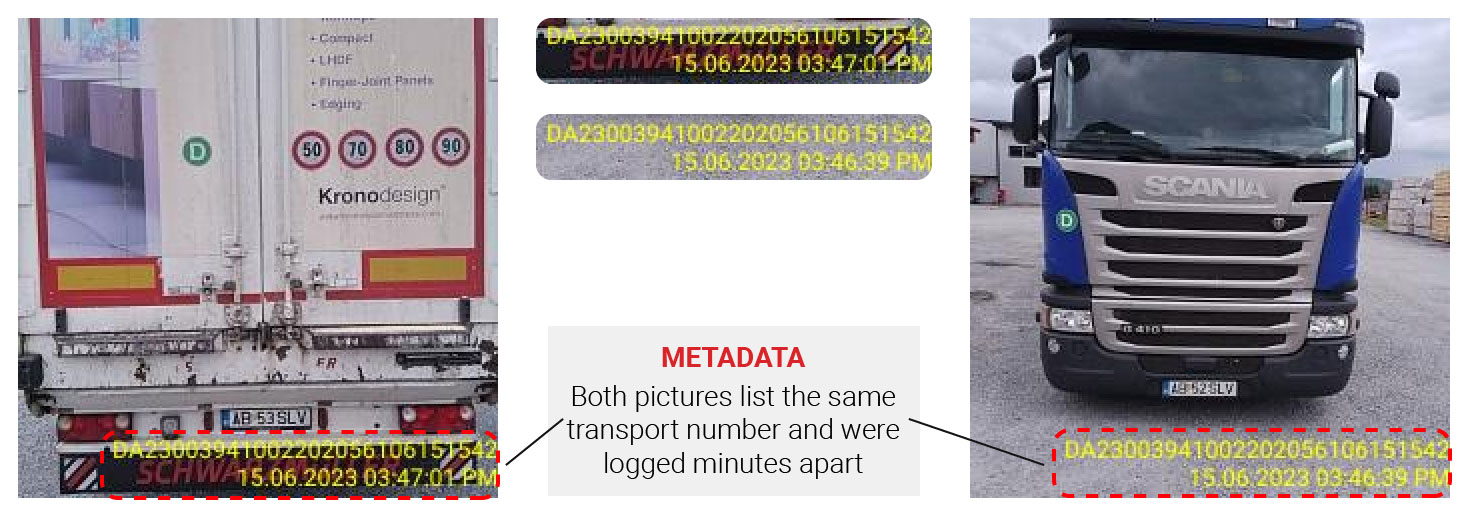
But the picture showing the truck’s contents — supposedly taken just two minutes later — looks out of place. Here the sky is a completely different color, and streaks of printer ink and what looks like a crack on a phone screen are visible against the clouds, suggesting it could be a photograph of a photograph of a printout.
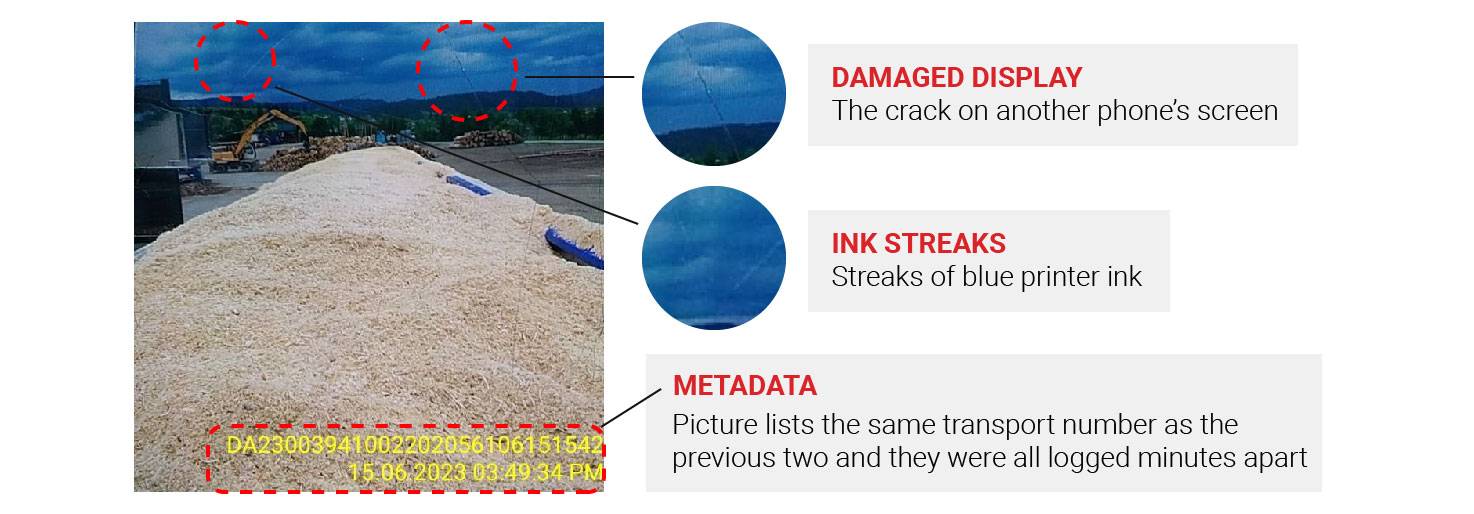
For now, experts on Romania’s timber industry say companies must do more to police their own supply chains.
“Big processing companies in the wood market are the actors who define what happens in the forest,” said Gălușcă of Greenpeace Romania.
“If they care about sustainability then they must develop internal traceability methods, additional to SUMAL.”
Gălușcă added that while SUMAL has been effective so far, it needs to keep evolving to stay one step ahead of illegal loggers.
“There is a need for a constant improvement of this mechanism so that illegal logging, now better hidden in bureaucratic documents, does not erode the most valuable forests in temperate Europe.”

